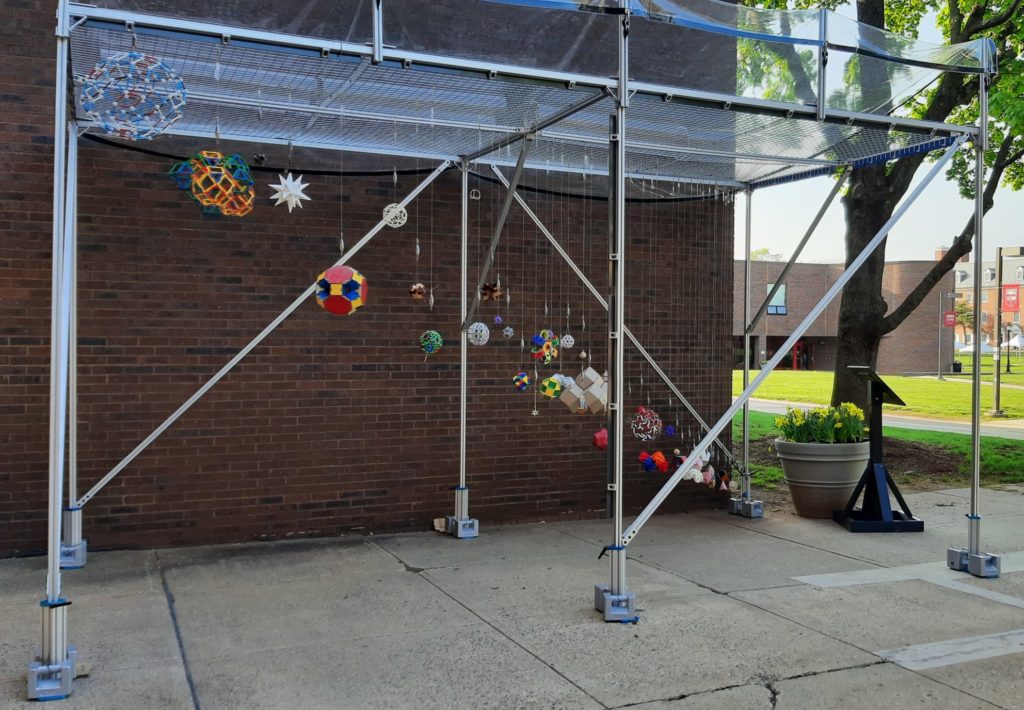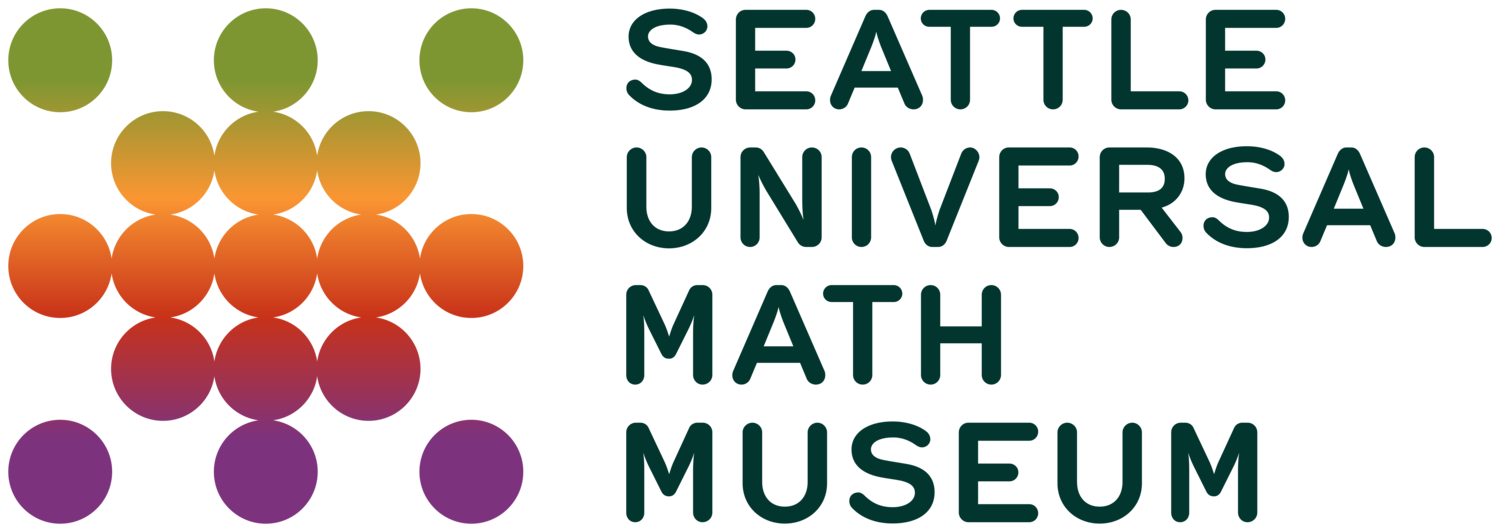
Exploring the natural laws of shape
When you enter this exhibit, you are surrounded by numerous three-dimensional shapes: works by artists from around the world together with commercial products that highlight the importance of geometric form in human culture. These many objects can be enjoyed individually: with so many different media, colors, and styles, surely one or more of them will catch your eye and hold your attention.

If you take time to consider the collection as a whole, you may find that additional structure emerges. Some of the shapes appear to be scattered haphazardly, whereas others seem to align in neat rows or seem to form rays emanating from the lower-right corner of the exhibit. These patterns are no accident. All of the shapes in Polyplane are polyhedra, and each has specific numbers of faces, edges, and vertices. Each one has been precisely positioned within the framework defining Polyplane so that its distance from the right side of the exhibit (in inches) is its number of faces, its distance into the exhibit is its number of edges, and its height is its number of vertices.
This positioning gives rise to the patterns you see. In particular, you may notice that all of the items, except one, are confined to a narrow band within the exhibit. It turns out they all lie on a single flat plane slicing through space. The producers of Polyplane, Alex Kontorovich and Glen Whitney, want to emphasize that they did not pre-select or limit the individual submissions to bring about this arrangement. Contributors are free to select whatever polyhedra they want, and any submissions would lead to this same overall structure. What you are seeing is the physical manifestation of a natural law relating the three numbers describing any of these shapes: the Euler Polyhedron Formula. Discovered nearly a half-millenium ago, this insight has continued to motivate and inspire further discovery all the way to the frontiers of current research.
The math you see in Polyplane
Matt Parker of Stand-Up Maths has created a lovely video presenting the math embodied in this exhibition, no previous background needed:
Venues and other information
The next showing of Polyplane will be at the Institute of Pure and Applied Mathematics, on UCLA campus in Los Angeles, CA, Feb 1-28. See the hosting page for a full schedule.
Please browse the rest of this site via the menu in the top bar to find out more about the content of the exhibit, how you can (still!) contribute to Polyplane, or how you can host a showing. Thanks for visiting!
The producers wish to express their gratitude to the Seattle Universal Math Museum, whose fiscal sponsorship of Studio Infinity makes the ongoing tour of Polyplane possible.